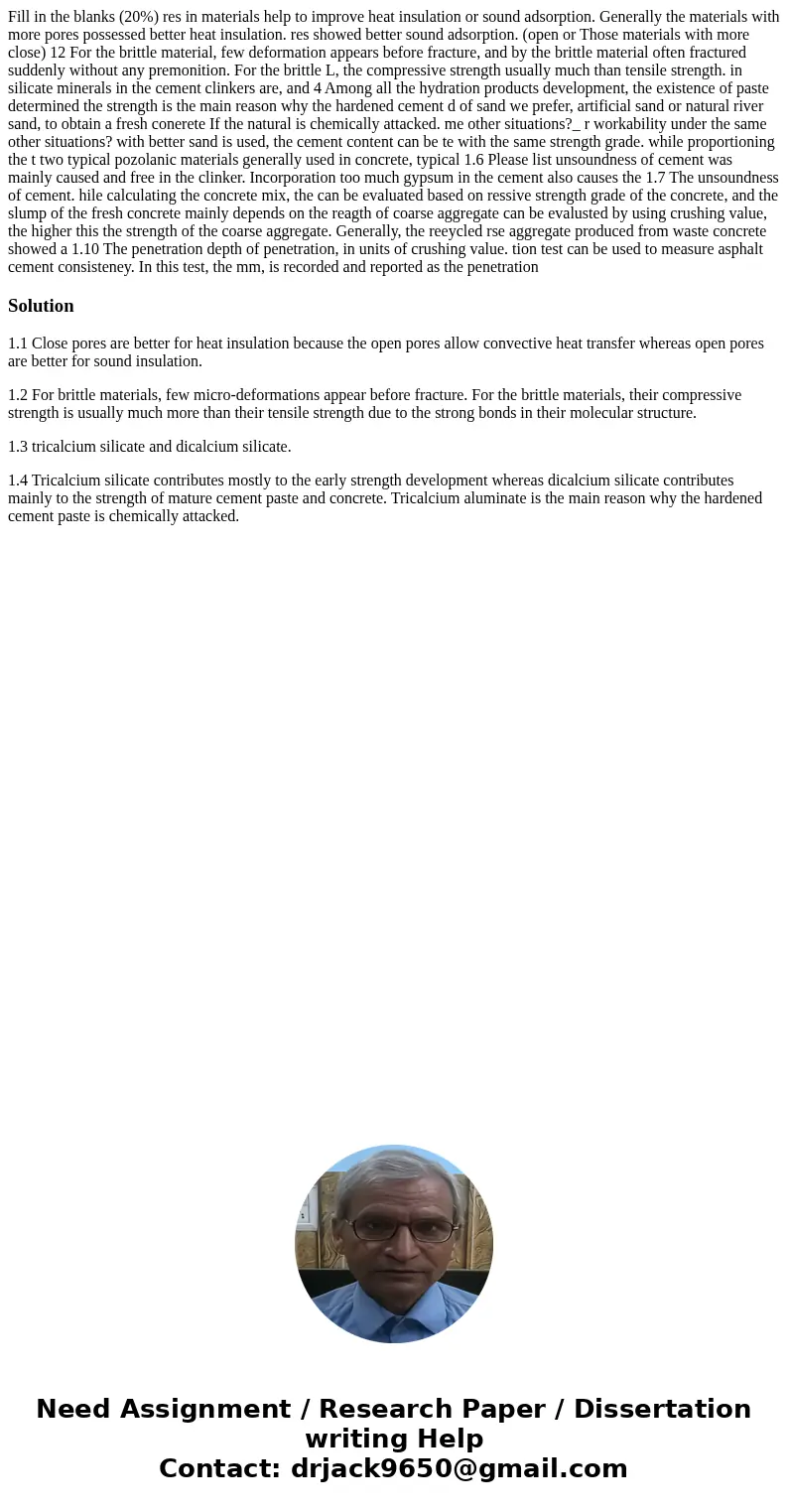Fill in the blanks 20 res in materials help to improve heat
Fill in the blanks (20%) res in materials help to improve heat insulation or sound adsorption. Generally the materials with more pores possessed better heat insulation. res showed better sound adsorption. (open or Those materials with more close) 12 For the brittle material, few deformation appears before fracture, and by the brittle material often fractured suddenly without any premonition. For the brittle L, the compressive strength usually much than tensile strength. in silicate minerals in the cement clinkers are, and 4 Among all the hydration products development, the existence of paste determined the strength is the main reason why the hardened cement d of sand we prefer, artificial sand or natural river sand, to obtain a fresh conerete If the natural is chemically attacked. me other situations?_ r workability under the same other situations? with better sand is used, the cement content can be te with the same strength grade. while proportioning the t two typical pozolanic materials generally used in concrete, typical 1.6 Please list unsoundness of cement was mainly caused and free in the clinker. Incorporation too much gypsum in the cement also causes the 1.7 The unsoundness of cement. hile calculating the concrete mix, the can be evaluated based on ressive strength grade of the concrete, and the slump of the fresh concrete mainly depends on the reagth of coarse aggregate can be evalusted by using crushing value, the higher this the strength of the coarse aggregate. Generally, the reeycled rse aggregate produced from waste concrete showed a 1.10 The penetration depth of penetration, in units of crushing value. tion test can be used to measure asphalt cement consisteney. In this test, the mm, is recorded and reported as the penetration 
Solution
1.1 Close pores are better for heat insulation because the open pores allow convective heat transfer whereas open pores are better for sound insulation.
1.2 For brittle materials, few micro-deformations appear before fracture. For the brittle materials, their compressive strength is usually much more than their tensile strength due to the strong bonds in their molecular structure.
1.3 tricalcium silicate and dicalcium silicate.
1.4 Tricalcium silicate contributes mostly to the early strength development whereas dicalcium silicate contributes mainly to the strength of mature cement paste and concrete. Tricalcium aluminate is the main reason why the hardened cement paste is chemically attacked.

 Homework Sourse
Homework Sourse